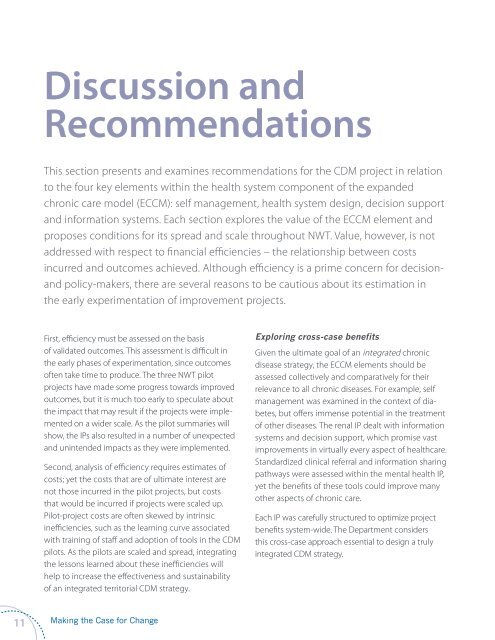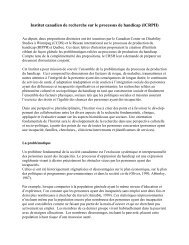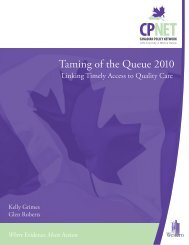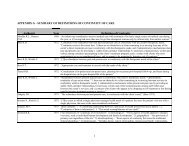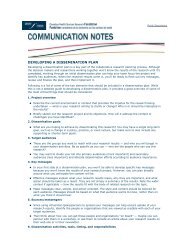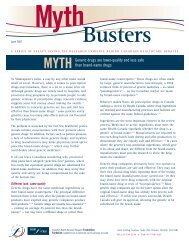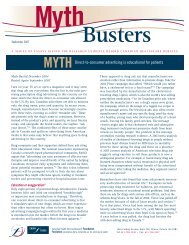Full Report
Full Report
Full Report
Create successful ePaper yourself
Turn your PDF publications into a flip-book with our unique Google optimized e-Paper software.
Discussion and<br />
Recommendations<br />
This section presents and examines recommendations for the CDM project in relation<br />
to the four key elements within the health system component of the expanded<br />
chronic care model (ECCM): self management, health system design, decision support<br />
and information systems. Each section explores the value of the ECCM element and<br />
proposes conditions for its spread and scale throughout NWT. Value, however, is not<br />
addressed with respect to financial efficiencies – the relationship between costs<br />
incurred and outcomes achieved. Although efficiency is a prime concern for decisionand<br />
policy-makers, there are several reasons to be cautious about its estimation in<br />
the early experimentation of improvement projects.<br />
First, efficiency must be assessed on the basis<br />
of validated outcomes. This assessment is difficult in<br />
the early phases of experimentation, since outcomes<br />
often take time to produce. The three NWT pilot<br />
projects have made some progress towards improved<br />
outcomes, but it is much too early to speculate about<br />
the impact that may result if the projects were implemented<br />
on a wider scale. As the pilot summaries will<br />
show, the IPs also resulted in a number of unexpected<br />
and unintended impacts as they were implemented.<br />
Second, analysis of efficiency requires estimates of<br />
costs; yet the costs that are of ultimate interest are<br />
not those incurred in the pilot projects, but costs<br />
that would be incurred if projects were scaled up.<br />
Pilot-project costs are often skewed by intrinsic<br />
inefficiencies, such as the learning curve associated<br />
with training of staff and adoption of tools in the CDM<br />
pilots. As the pilots are scaled and spread, integrating<br />
the lessons learned about these inefficiencies will<br />
help to increase the effectiveness and sustainability<br />
of an integrated territorial CDM strategy.<br />
Exploring cross-case benefits<br />
Given the ultimate goal of an integrated chronic<br />
disease strategy, the ECCM elements should be<br />
assessed collectively and comparatively for their<br />
relevance to all chronic diseases. For example, self<br />
management was examined in the context of diabetes,<br />
but offers immense potential in the treatment<br />
of other diseases. The renal IP dealt with information<br />
systems and decision support, which promise vast<br />
improvements in virtually every aspect of healthcare.<br />
Standardized clinical referral and information sharing<br />
pathways were assessed within the mental health IP,<br />
yet the benefits of these tools could improve many<br />
other aspects of chronic care.<br />
Each IP was carefully structured to optimize project<br />
benefits system-wide. The Department considers<br />
this cross-case approach essential to design a truly<br />
integrated CDM strategy.<br />
11<br />
Making the Case for Change


